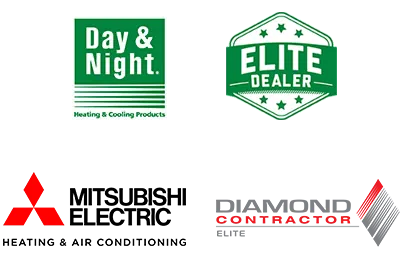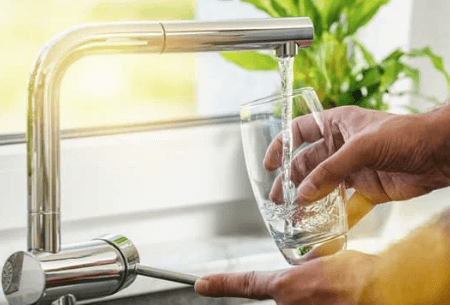
Water, like air, is crucial to our existence. We drink it, bathe in it, cook meals with it, and so much more. But, before we can use it, water must be treated. Water treatment plants handle the heavy lifting, but even when it makes it to our home, it doesn’t always pass the smell test (figuratively and literally).
Instead of drinking odd-tasting or foul-smelling water, you’ll want to find a home water treatment system that meets your standards. As you look for the right water treatment system, you’ll often see water conditioners and water softeners as the suggested solutions. Before you make a decision on the right one for you, let’s take a closer look at how each works and the benefits offered by the different systems.
Hard water is a term that gets thrown around quite a bit, but what exactly is it? It’s water with a high level of dissolved minerals, mostly calcium and magnesium.
Hard water leaves mineral deposits behind on surfaces it comes into contact with. If you’ve noticed a white mineral buildup around your bathroom and kitchen fixtures or surfaces, you probably have hard water. This is known as scaling, and it’s very noticeable on shower doors.
Scale buildup doesn’t just happen in the bathroom or kitchen. It can also be found inside the walls of plumbing fixtures. Scale buildup reduces the efficiency of appliances that heat water, including the dishwasher. It also dries out your skin and decreases the natural sheen and volume of hair.
Water conditioners and softeners are the filtration systems used to fight these unpleasant mineral deposits in homes or businesses that rely on hard water.
The process water softeners use to filter water is referred to as ion exchange or reverse osmosis. They replace dissolved mineral ions with sodium ions. The system comprises two tanks, a primary and a secondary.
The primary tank holds sodium ion-coated resin beads, while the secondary team holds a salty brine solution. This solution regenerates the resin contained in the primary tank.
Mineral ions become bonded to water molecules as they travel through the soil. The water softener breaks the bond by serving as a magnet to the mineral ions. Once the water reaches the primary tank, the resin beads attract the mineral ions. The mineral ions then attach themselves to the sodium ions covering the beads, creating a balanced charge. This process reduces hard water, resulting in less mineral buildup in your home and more pleasant-tasting water to drink.
The water softening system must undergo a regular regeneration process to remain effective. Salt needs to be added to the brine tank periodically in order for the system to continue providing soft water.
The majority of water conditioners don’t use salt to remove unwanted substances like chlorine, volatile organic compounds (VOCs), chloramines, organic gasses, and lead.
Depending on the water conditioner, it may filter the water as it passes through the system. However, other types of water conditioners alter the structure of undesired minerals, much like a water softener. For example, many water conditioners use template-assisted crystallization (TAC) media to provide soft water to the home.
When hard water goes through the TAC media, the minerals react to it and get turned into tiny crystals. Though all of the hard mineral ions won’t be crystallized, a water conditioner will produce enough crystals to eliminate scaling.
Deciding on the right system depends on what elements you want eliminated from your water and how you want it done. As you make your decision, review what makes each system unique below:
While water softeners can be a good choice, keep in mind that some local water districts in California have banned salt-based softeners. If you live in one of these areas, make sure you purchase a water softener that isn’t salt-based or go with a water conditioner instead.
Since water conditioners can include water-softening features and don’t rely on salt, they’re often the better choice for California-based homeowners and businesses.
If you’re looking for a water conditioner system install near you in Vacaville, Novato, or the surrounding Northern California area, turn to Peter Levi Plumbing, Heating, Cooling and Drains. Our trained plumbers can help you select the perfect water conditioner for your home or business. Once you’ve decided on your system, our team will install it quickly and ensure it’s working correctly before leaving. We also offer multiple coupons to ensure you get a great deal on our plumbing services.
Learn more about our plumbing services today. If you’re ready for a water conditioner system install, please call us at 800-605-5713 or make an appointment via our online form.

GM, Peter Levi Plumbing, Heating, Cooling and Drains
With over twenty years of expertise in HVAC, plumbing, and drain services, I specialize in delivering high-quality solutions for residential needs. From high-end heating and air conditioning systems to comprehensive plumbing and underground construction projects, I am committed to providing exceptional service and reliability for every household. Whether it's an emergency repair or a planned home upgrade, my focus is always on delivering the best customer experience.
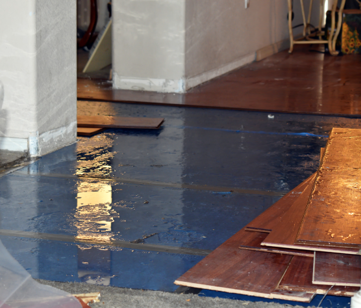
Your home's drains may not be the most glamorous part of your property, but they play a crucial role in keeping your daily routines smooth and your living environment healthy. However, it's surprising how often we neglect these vital systems until a problem arises. In this blog, we'll shed light on the five most underestimated but costly consequences of ignoring drain maintenance.
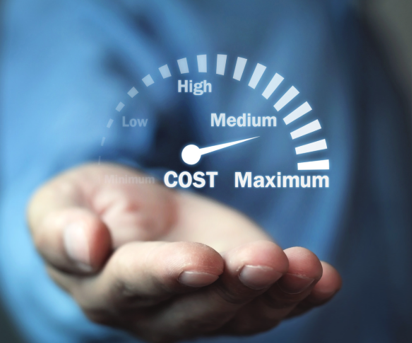
Neglecting routine drain maintenance can lead to an array of issues, such as stubborn clogs, leaks, and damage to your entire plumbing system. Unfortunately, these problems tend to escalate quickly. By the time you notice a drain issue, it may have grown into something more serious, requiring costly repairs. At Peter Levi Plumbing, Heating, Cooling and Drains, our skilled technicians often have to employ specialized tools and techniques to tackle neglected drain problems.
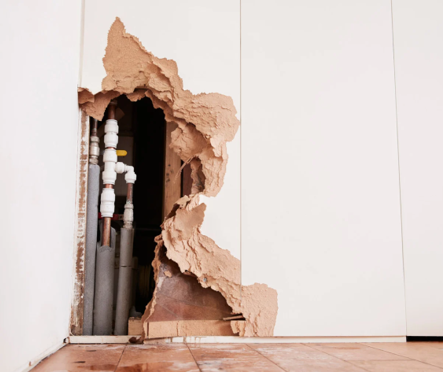
Blocked or leaking drains can spell disaster for your home. Beyond impacting your plumbing, they can wreak havoc on your walls, floors, and ceilings. Repairing water damage can be an expensive and time-consuming process, and in severe cases, it might necessitate extensive remodeling. Additionally, stagnant water can encourage mold and mildew growth, posing health risks and leading to further financial burdens for remediation.
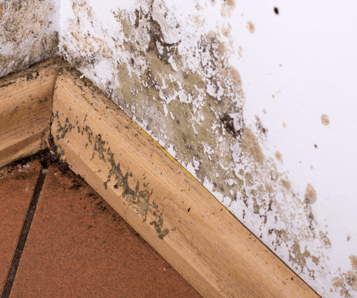
Neglected drains aren't just unpleasant. They can also be health hazards. Clogged drains create a breeding ground for harmful bacteria, mold, and unpleasant odors. These contaminants can affect the well-being of your family, potentially leading to respiratory issues and infections. A simple investment in drain maintenance can go a long way in ensuring a healthy home environment.
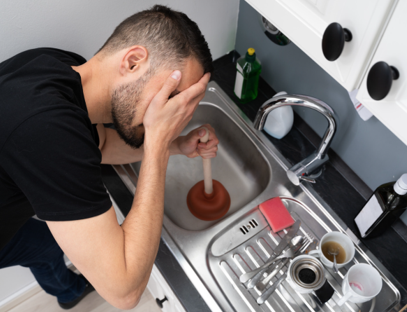
Dealing with drain problems can be a significant inconvenience. Foul odors can spread throughout your home, slow drainage can lead to backups, and blocked sinks can disrupt your daily routines. Whether it's preparing meals or trying to get ready for work in the morning, neglected drains can make these tasks far more challenging than they need to be.
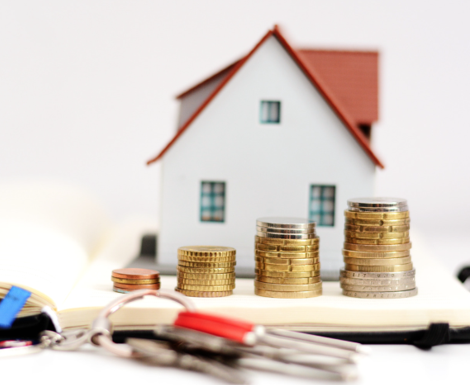
When you decide to sell your home, neglected plumbing and drainage systems can negatively impact its value. Prospective buyers may be wary of purchasing a property with a history of unaddressed plumbing issues, potentially leading to lower offers and a more extended time on the market.
In summary, neglecting drain maintenance can lead to a host of issues that extend far beyond mere inconvenience. It can result in significant financial costs, extensive damage to your cherished home, health hazards, and even a decreased property value. To avoid these costly consequences, make the wise choice to invest in regular drain maintenance. With regular drain cleaning services, you can reduce repairs, increase water flow, promote longevity, and ensure your drains aren’t home to dangerous bacteria or mold.
Whether it's routine cleaning or promptly addressing minor issues, taking care of your drains is an investment in the long-term health and value of your home. If you want to keep your drains in great shape and are looking for drain maintenance services near you in Novato, Vacaville, or the surrounding Northern California area, Peter Levi can help. Once you contact us and schedule an appointment, our team can inspect your drains, clean them, and provide any needed repairs or maintenance services.
Learn more about our drain cleaning and maintenance services today. If you have any questions or want to schedule an appointment, please fill out our online form or call us at 800-605-5713.

GM, Peter Levi Plumbing, Heating, Cooling and Drains
With over twenty years of expertise in HVAC, plumbing, and drain services, I specialize in delivering high-quality solutions for residential needs. From high-end heating and air conditioning systems to comprehensive plumbing and underground construction projects, I am committed to providing exceptional service and reliability for every household. Whether it's an emergency repair or a planned home upgrade, my focus is always on delivering the best customer experience.
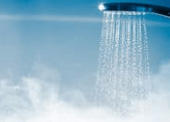
A cold shower when you don’t want one is not a fun experience, but it doesn’t have to be something you suffer through every day. Instead, you can keep your shower and water heater in great shape by knowing more about how long it normally takes to heat water and the main reasons why a shower might not give you hot water.
If your water heater is working correctly and you haven’t used up all the hot water in its tank already, your shower should only take a couple of minutes to reach the temperature you want. Since your water heater tank will store hot water, it doesn’t take long for the hot water to reach your shower.
When you have to wait longer than a couple of minutes for hot water, your water heater’s tank may have run out of it. However, if your tank isn’t out of hot water, you might need a hot water heater repair to fix whatever issue is preventing hot water from reaching your shower.
If your water heater’s tank runs out of hot water, you’ll have to wait for it to heat the water again before you can take a hot shower. Usually, water heaters run out of water due to excess use, such as when someone takes a very long shower or multiple people take showers in a short period. Whatever the cause, it will probably take 30 minutes to 80 minutes for your water heater to completely heat the water in its tank.
If your shower always takes a long time to heat up, the cause could be due to a few different issues. Fortunately, water heater repair services can solve most issues that affect a shower’s temperature. Learn more about the top five reasons showers take a long time to heat up below:
Sometimes, a shower that takes forever to heat up is due to the distance between the shower and the water heater. Basically, when your water heater is far from your shower, the hot water will take longer to run through your pipes and reach your shower head. Wider than normal pipes can also slow down your hot water. A trained plumber can usually solve this issue and ensure you receive hot water faster.
If you don’t regularly maintain your water heater, sediment inside your tank and pipes will build up. Over time, minerals like calcium and magnesium can block your water heater’s heat mechanism and slow the heating process. This issue can usually be fixed by a full tank flush from a trained plumber, as this service is designed to get rid of sediment build-up. Additionally, scheduling regular water heater flushes can stop the issue from coming back.
Normally, a water heater is set to a temperature between 120 and 140 degrees. If someone has lowered your water heater’s thermostat to a temperature below 120, your water heater will struggle to give you hot water. Additionally, temperatures lower than 120 can cause bacteria to grow in your water and affect your health. If your thermostat is set lower than 120, raise it back to that temperature and see if it solves your issue.
Your water heater’s dip tube is responsible for sending cold water to the bottom of your tank, where it can be heated. If your dip tube is broken or malfunctioning, the cold water can be directed to the top of the tank, causing it to mix with the hot water. As a result, you’ll notice a dip in your shower’s maximum temperature. During a water heater repair, a plumber can solve this issue by repairing or replacing the dip tube.
When you have a lot of people taking showers or using hot water for other purposes in your home, you’ll run out of hot water faster. If you constantly have to take cold showers due to too many people showering before you, your tank’s size is the issue. To ensure your water heater can handle the demand, you’ll either need to upgrade to a larger tank or invest in a tankless water heater that delivers hot water instantaneously.
If you’re looking for water heater repair near you in Novato, Vacaville, or the surrounding Northern California area, turn to Peter Levi. Our certified plumbers can inspect and repair your water heater when you’re not receiving hot water. They can also replace your unit with a more efficient water heater or a tankless model when your unit is past the point of repair. Additionally, you can review our coupons to ensure you receive the best deal on any of our water heater repair services.
Learn more about our water heater repair services today. If you have any questions or want to schedule an appointment, please contact us.

GM, Peter Levi Plumbing, Heating, Cooling and Drains
With over twenty years of expertise in HVAC, plumbing, and drain services, I specialize in delivering high-quality solutions for residential needs. From high-end heating and air conditioning systems to comprehensive plumbing and underground construction projects, I am committed to providing exceptional service and reliability for every household. Whether it's an emergency repair or a planned home upgrade, my focus is always on delivering the best customer experience.
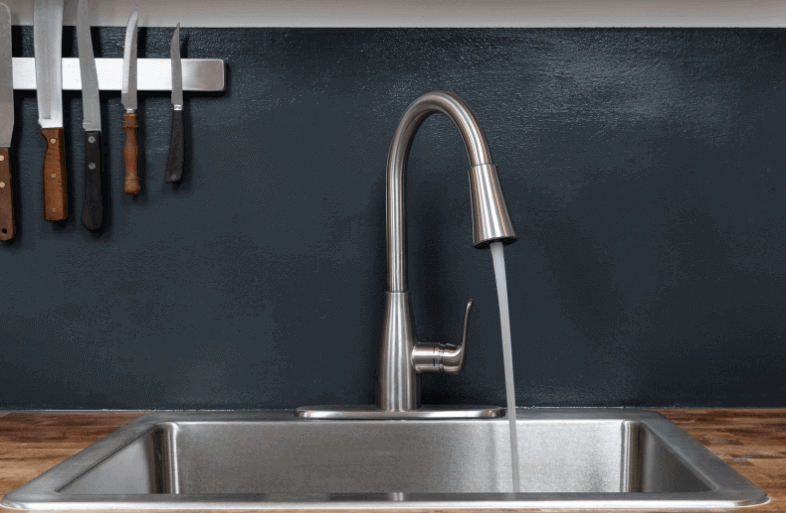
No one wants to turn on their faucet and see a stream of cloudy or brown water. Water is too important to our daily lives to be unusable when it flows into our homes. When we see discolored water, we know there’s a problem, but why, and what can we do to fix it?
Let’s explore a few reasons your water may be tainted and whether there are dangers associated with discoloration.
Discolored water is a sure sign of poor water quality, but you’ll need to know why your water is discolored to properly solve the problem. Your water may be discolored for any of the following reasons:
When a water main breaks or the water lines are flushed, the pressure of the water flow changes. The rust, dirt, and sediment built up in the water line is disturbed and picked up by the water entering your home.
During droughts, fresh surface water comes into contact with sediment at the bottom of the river or stream supplying water. Extreme weather conditions can also cause problems for homeowners that use a private well. Excessive and heavy rains will trigger fluctuations in the water table, and an excess of iron will seep into the water supply, causing discoloration.
The most common reason water discoloration occurs is a broken water pipe or a recently replaced pipe. Rust from the broken pipe slips into the water supply turning it brown. Replacing a pipe can also change the water pressure and loosen deposits from the piping.
Discolored water is usually not considered dangerous. The issue is usually due to a sediment or iron build-up, and the concentrations are too low to be considered harmful. However, you could potentially ingest bacteria like mold or mildew, which will have an adverse effect on your health. As a result, you may want to wait to drink your home’s water before it’s fixed.
As soon as you see the discolored stream, you should spring into action and have the issue rectified. The following methods are extremely helpful in solving water discoloration:
If you need water discoloration services near you in Novato, Vacaville, or the surrounding Northern California area, Peter Levi can make sure your water is safe and running clear. Whether you need a hot water heater replaced or a filtration system installed, our team can provide a solution fitting your budget. We also offer multiple coupons to ensure our clients get an excellent deal.
Learn more about our plumbing and water heater services today. If you need service, please make an appointment online or call us at 800.605.5713.

GM, Peter Levi Plumbing, Heating, Cooling and Drains
With over twenty years of expertise in HVAC, plumbing, and drain services, I specialize in delivering high-quality solutions for residential needs. From high-end heating and air conditioning systems to comprehensive plumbing and underground construction projects, I am committed to providing exceptional service and reliability for every household. Whether it's an emergency repair or a planned home upgrade, my focus is always on delivering the best customer experience.
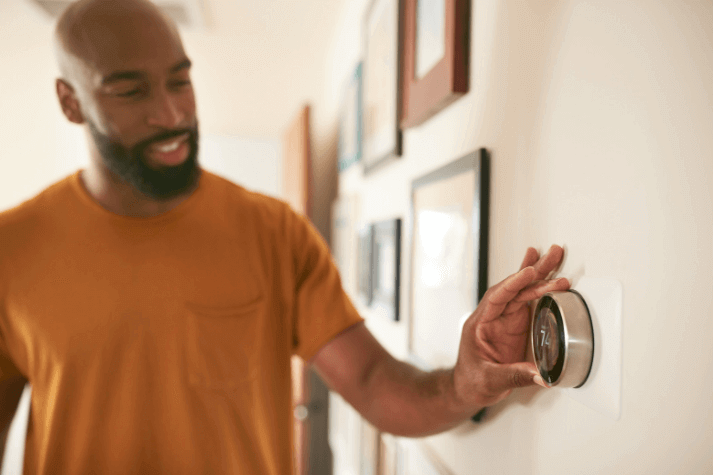
Your home’s thermostat is one of the most important components of your HVAC system, as it measures and controls your home’s temperature. When you have an inaccurate thermostat, your HVAC system won’t generate enough cool or hot air to match your setting. Fortunately, knowing the five main signs of an inaccurate thermostat can help you get ahead of the problem and solve it before it impacts your quality of life.
The most obvious sign that you have an inaccurate thermostat is if your home feels colder or warmer than the temperature you’ve set. For example, if you’ve set your thermostat to 70 degrees, but you’re sweating indoors and your home feels like it’s in the 80s, your thermostat likely has an issue.
While you can usually tell if a thermostat is inaccurate based on how a room feels, you could also compare your thermostat’s reading to a separate portable thermostat’s reading. If the two thermostats show different temperatures, an HVAC technician will need to inspect your thermostat to find out what’s causing the inaccurate thermostat reading.
If your thermostat is installed near a place in your home where the temperature consistently swings, your thermostat’s reading is likely off. For instance, a thermostat near a door will likely experience various temperature swings as people enter and exit your home. A thermostat exposed to direct sunlight can also be affected, as the sunlight can make the thermostat believe your home is warmer than it actually is.
Typically, this issue can be solved by installing the thermostat in a new location. However, if your home isn’t properly zoned, you could also need home zoning services to prevent temperature fluctuations.
Another sign that you have an inaccurate thermostat is if you’re still using a mercury-based thermostat that’s not level. These older thermostats are usually installed in older homes and need to stay level to provide an accurate reading.
If you have one of these thermostats and it’s not in a level position, you’ll need to adjust it back to a level position to get an accurate reading. However, it’s usually best to replace the thermostat and invest in programmable thermostat installation services to receive the convenience and energy-saving benefits of modern thermostats.
Modern thermostats rely on sensors to detect your home’s temperature and provide an accurate reading. When these sensors are dirty or damaged, your thermostat can’t properly determine the correct temperature. As a result, a visibly damaged or dirty sensor is a sign you have an inaccurate thermostat. While you can fix a dirty sensor by cleaning the inside of your thermostat and recalibrating it afterward, you’ll need an HVAC professional to repair a damaged sensor.
Thermostats usually have a life expectancy of about ten years. If you have an old thermostat past its expected lifespan, it could be providing inaccurate readings. Instead of repairing an old thermostat, it’s often better to replace it with a new model, especially if you don’t have a smart or programmable thermostat.
With programmable thermostat installation, you can receive all the benefits of the newest temperature-control technology. For example, programmable thermostats give you the opportunity to set your thermostat on a schedule that saves energy while you’re away from home. Many new thermostats also pair with phones and other devices, meaning you can conveniently control your home’s temperature even when you’re away.
If you’re looking for thermostat repair, replacement, or installation services near you in Vallejo, Benicia, Fairfield, Novato or the surrounding Northern California area, turn to Peter Levi. Our HVAC professionals can inspect your inaccurate thermostat and provide a solution that fixes it for you. You can also turn to us for smart or programmable thermostat installation when you want to upgrade your existing thermostat and receive the most accurate reading possible. Additionally, you can review our coupons to ensure you get a great deal.
Learn more about our programmable thermostat installation and repair services today. If you have any questions or want to schedule an appointment, please contact us.

GM, Peter Levi Plumbing, Heating, Cooling and Drains
With over twenty years of expertise in HVAC, plumbing, and drain services, I specialize in delivering high-quality solutions for residential needs. From high-end heating and air conditioning systems to comprehensive plumbing and underground construction projects, I am committed to providing exceptional service and reliability for every household. Whether it's an emergency repair or a planned home upgrade, my focus is always on delivering the best customer experience.

If you own a cat or a dog, you probably want to give them the best life possible. Besides feeding them their favorite foods, buying them a comfortable bed, and playing with them throughout the day, you can make sure they're as comfortable as possible by keeping your home at the best temperature for them. After all, you don’t want your furry companion to be too cold or hot. Fortunately, it’s fairly easy to keep your home at the right temperature when you know how to pick the right temperature settings for dogs and cats.
While it’s a good idea to raise your home’s temperature in the summer and lower it in the winter while you’re away from home to reduce energy usage, it’s not always a great idea if you own a pet. For example, it’s usually smart to raise your thermostat past 80 degrees in the summer when you’re not at home, but that thermostat setting can be a bit too hot for your pets.
In the same way, you won’t want to set your home at 60 degrees or colder, as this can be too cold for cats and other animals. Learn more about the right temperature for your pets during the summer and winter below:
During the summer, it’s typically best to keep your home between 75 and 78 degrees at most times for your cat or dog. However, depending on your dog breed, you may be able to bump it up to 82 degrees (but no higher!) when you’re away to save on energy costs. For cats, you can set your home to the mid-80s while you’re gone, as most cat breeds tend to tolerate higher temperatures more easily.
In the winter, you can have your home cooler to save energy and still keep your cats and dogs comfortable. Usually, the right winter temperature for dogs is between 69 and 72 degrees when you’re at home. While you’re away, you can sometimes bump it down to the lower 60s (but now lower) if you only own a dog and it has a longer coat of fur.
When you own a cat, you’ll never want to set your thermostat below the 70 to 72-degree temperature range, as cats struggle to maintain their natural body temperature below 70 degrees. That being said, if you like your home toasty warm during the winter, you’ll be happy to know that most cats can be comfortable in temperatures up to 88 degrees.
It’s important to remember that the recommended temperature ranges listed above aren’t right for every pet. While most cats and dogs will be happy at the temperatures above, some factors can affect the right temperature for your pet. The main factors you’ll want to consider when choosing the right temperature for your pet include:
Since these factors can impact what temperature is right for your pet, it’s best to consult with your veterinarian on their temperature recommendation. Additionally, if you have any exotic pets, you’ll also want to check with a vet about the right thermostat settings.
While we all want to be great pet owners, it’s easy to forget to change the thermostat before you leave for work or remember what temperature is right for your animal. With a programmable or smart thermostat, you can solve these issues, as these thermostats will automatically adjust your thermostat on a schedule. Additionally, some smart thermostats allow you to change the temperature while you’re away from home, ensuring you can always keep an eye on your home’s temperature and adjust as needed.
If you’re looking for programmable thermostat installation services near you in Novato, Vacaville, or the surrounding Northern California area, turn to Peter Levi. With our trained HVAC technicians in your corner, we can help you select the right programmable thermostat for your home and your pet. After you decide on a thermostat, we can install it for you to ensure you can always easily control the temperature of your home.
Learn more about our smart and programmable thermostat installation services today. If you have any questions or want to schedule an appointment, please contact us.

GM, Peter Levi Plumbing, Heating, Cooling and Drains
With over twenty years of expertise in HVAC, plumbing, and drain services, I specialize in delivering high-quality solutions for residential needs. From high-end heating and air conditioning systems to comprehensive plumbing and underground construction projects, I am committed to providing exceptional service and reliability for every household. Whether it's an emergency repair or a planned home upgrade, my focus is always on delivering the best customer experience.
NOVATO
24 Digital Dr STE 1
Novato, CA 94949
VACAVILLE
1021 Mason St, STE 11
Vacaville, CA 95688
Mon - Fri. 7am - 7:30pm
Sat. 7:30am - 4pm
Sun. Closed
